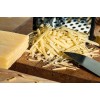Where to buy commercial Cheese Melter?
A cheese melter is a cooking device used primarily in commercial restaurant kitchens. Powered by direct flame or electricity, these long, toaster-like appliances allow cooks to put finishing touches on dishes, especially those topped with shredded cheese.
It is closely related to the Salamander broiler though it offers more fine control for browning a dish at the end of the cooking cycle. It is also less expensive and easier to use than a salamander.
The difference between Cheese Melter and Salamander Broiler
About Cheese Melters
Features:
Heated by electricity or gas
Countertop and wall-mounted units
Pass-thru models available
Use it for:
Melting cheese
Toasting bread
Heating plates
True to their name, cheese melters are generally the go-to tool for melting cheese on top of pasta, sandwiches, and French onion soup. They are also frequently used to toast bread and may be used to keep dishes warm after food is plated. Put simply, cheese melters are only designed to be used with food that has already been thoroughly cooked and requires some light finishing before service, which is why they're sometimes called finishing ovens. This light-duty equipment can also be implemented as a way to reheat some menu items like slices of pizza or bread prior to serving, offering the convenience and superior heating capacity of an oven without eating up a large footprint.
Cheese melters are available in electric and gas models, and maybe wall-mounted or used as countertop equipment. Some cheese melters are designed with a removable rear panel that allows them to act as pass-through units, which can be useful if the cheese melter is being used to warm plated meals between the kitchen and a serving station.
About Salamander Broiler
Features:
Heated by electricity or gas
Wall, range, or countertop units
Higher temperature range
Use it for:
Broiling steaks
Heating cast-iron platters
Browning and caramelizing dishes
They can also be used to melt cheese and toast bread, but salamander broilers offer a wider range of applications because they're built with more powerful heating elements. Salamanders are capable of not only eating food, but actually cooking it, so they can be used to broil fish and vegetables, brown chicken, and finish steaks. Salamanders are also commonly used to finish au gratin dishes and other meals that are best served with crispy, caramelized layers on top, and may be used to heat cast iron platters, like the ones used to serve fajitas.
Although salamanders are available in countertop models and wall-mounted units, they are commonly mounted above ranges to maximize workflow and cooking capacity, especially when cooking proteins. Commercial kitchens that need to do more than toast bread or melt cheese should consider investing in a salamander broiler to supplement an existing range during peak service times.
How to buy?
1. A Cheesemelter Is Not A Salamander – Cheesemelters and salamanders may have a lot in common but are two distinctly different pieces of equipment. Cheesemelters are intended to operate as finishing ovens; they radiate heat down on the already cooked product to melt cheese or brown product. Salamanders can be used to not only finish product but also used to cook. The salamander works as a top-down broiler and can be used to cook meats (many come with metal racks to create grill marks), like a rotisserie with a spit to roast things like gyro or fowl, and a number of other purposes. Salamanders cook at a higher heat than cheese melters and can be used to cook as well as for finishing.
2. Ceramic Or Infrared Heat – Both cheese melters and salamanders come with either ceramic or infrared heating elements. Ceramic heating elements produce a more evenly distributed heat but tend to heat the rest of the baking chamber, while infrared heating elements produce higher levels of more intense, focused heat. Though both work well, business owners shopping for a cheese melter often choose ceramic elements to keep initial costs down and those shopping for a high volume salamander tend to opt for infrared.
3. Where It Will Be Placed - It is essential you know where you intend on placing your cheese melter or salamander before shopping. These pieces of equipment are often wall mounted or mounted on the rear shelf of a range so cooks can closely monitor them, however, the special mounting hardware is often required to properly do so. There are a number of standalone pieces that can fit on countertops, and even some large double salamanders that are freestanding, but these freestanding broilers tend to be found in operations that rely heavily on their salamander. Have a specific space in your kitchen in mind for your new piece of equipment before shopping.
4. What Will You Be Using It For - As previously stated, though salamanders and cheese melters share some of the same finishing functions, they are distinctly different pieces of equipment. Before starting to shop, know what you intend on using your new piece of equipment for. Knowing in advance that you will only be using your piece for melting cheese on nachos or browning French onion soup will stop you from purchasing “too much machine”. The aforementioned business would not do well to purchase an expensive freestanding double salamander; it may come in handy down the road, but for the tasks at hand it would be overkill.
5. The Ideal Size – Space is a concern in every commercial kitchen, but there are a number of other reasons that picking the right size salamander or cheese melter is advantageous. These pieces will obviously be a draw on power sources, so it is important to have the right size piece to reduce energy costs. However, that being said, business owners should not sacrifice a properly sized piece of equipment to save on energy. Purchasing an undersized salamander or broiler can significantly add to customer wait times in high volume establishments, so a balance between energy savings and proper cooking space should be determined before shopping.
Finally, if you want to buy Cheese Melter or Salamander Broiler, go to our website(https://www.webkitchenstore.com/) to buy it. We have the best quality products, the most affordable prices, the most thoughtful services, the most complete products, and so on. Come shopping now!
Related Articles
Search
Categories
Popular Posts






















Comments: 0
No comments